Contents of
- Species of ficus
- Home care
- Reproduction of ficus
- Video: Reproduction of ficuses
- How to transplant the ficus correctly?
- Video: Transplanting the ficus
- How to water the ficus?
- Video: Ficus Benjamin care, watering
- Why does Ficus shed leaves?
- Video: Why does the ficus have fallen leaves?
- Diseases of the leaves of ficus: fungal, parasitic. Pests of ficus
- Video: Pests of houseplants mealybug
- Video: Ficus-choice, cultivation, care.
Ficus is a very beautiful evergreen plant. Easy to clean. Very beneficial effect on the microclimate of the room.
Species of ficus
Species of ficuses, according to various sources, there are 800 to 2000
Of these, about 20 species are grown at home.
Consider some types of home-grown this tree.
Mountain Montana
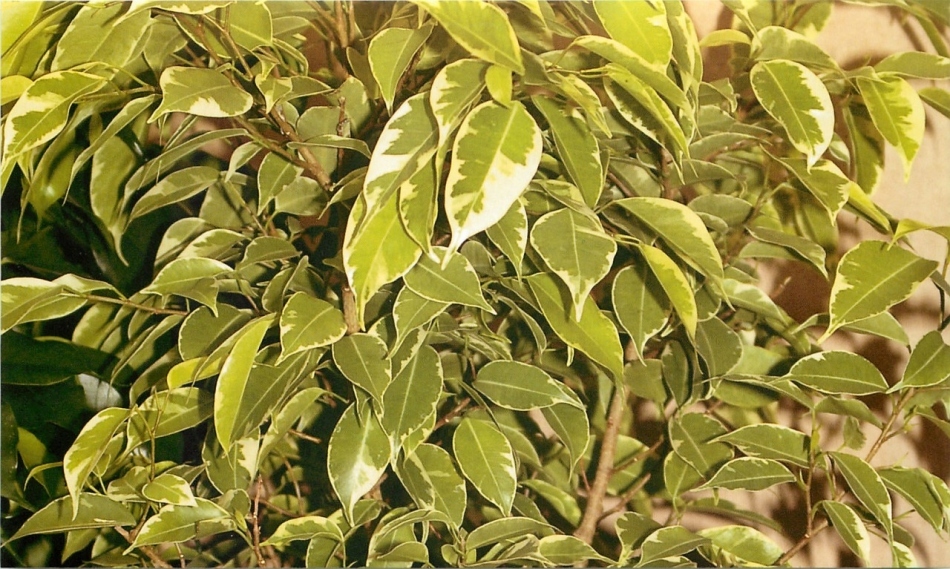 Ficus at home
Ficus at home Small-leafed fig-trees of Indochinese origin requiring constant moisture of earth and air. Beautifully looked in a suspended pot. If in pots, then in combination with higher plants, like ornamental grass
Bottle.
Originally from California and Mexico. They acquired their name due to the bottle form of the trunk. Which is necessary for the accumulation of moisture, which is a rarity in hot climatic conditions.
Sacred
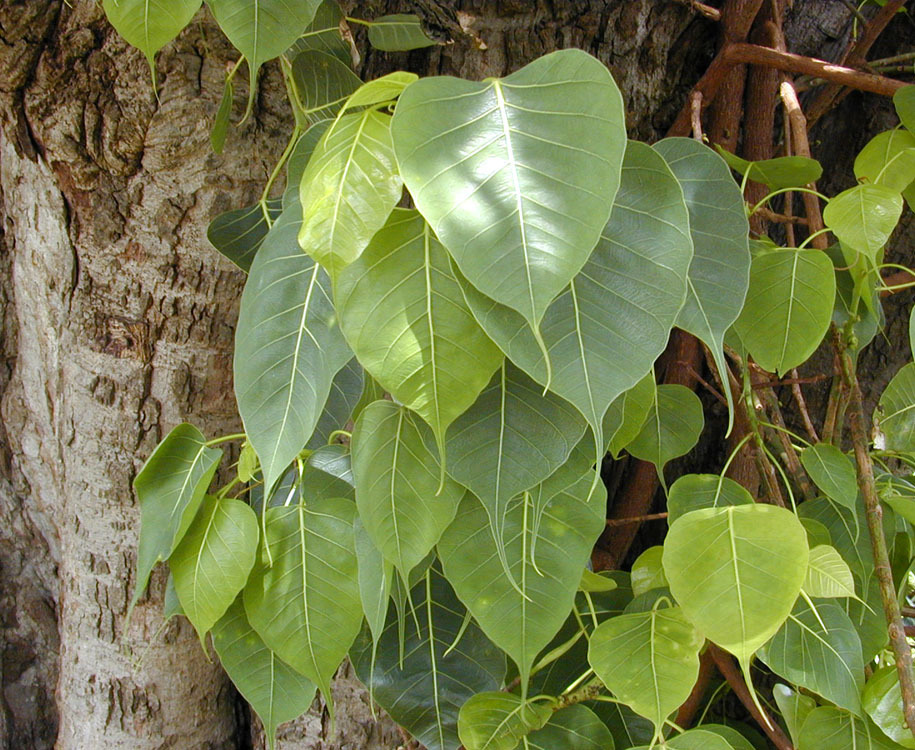 Sacred Ficus at home
Sacred Ficus at home Got a name due to the property of the leaves to change the atmospheric pressure to release liquid. And according to the ancient giving of Buddhists it is believed that it was under this tree that the Prince of Gouda was transformed into a Buddha.
Has heart-shaped, large bluish-green leaves, with white streaks in the middle of 10-20 cm long. Strongly clinging to the earth with numerous roots coming out, in the form of supports. He comes from India, Thailand, China, Taiwan. Height at home 30 meters
Triangular( triangular)
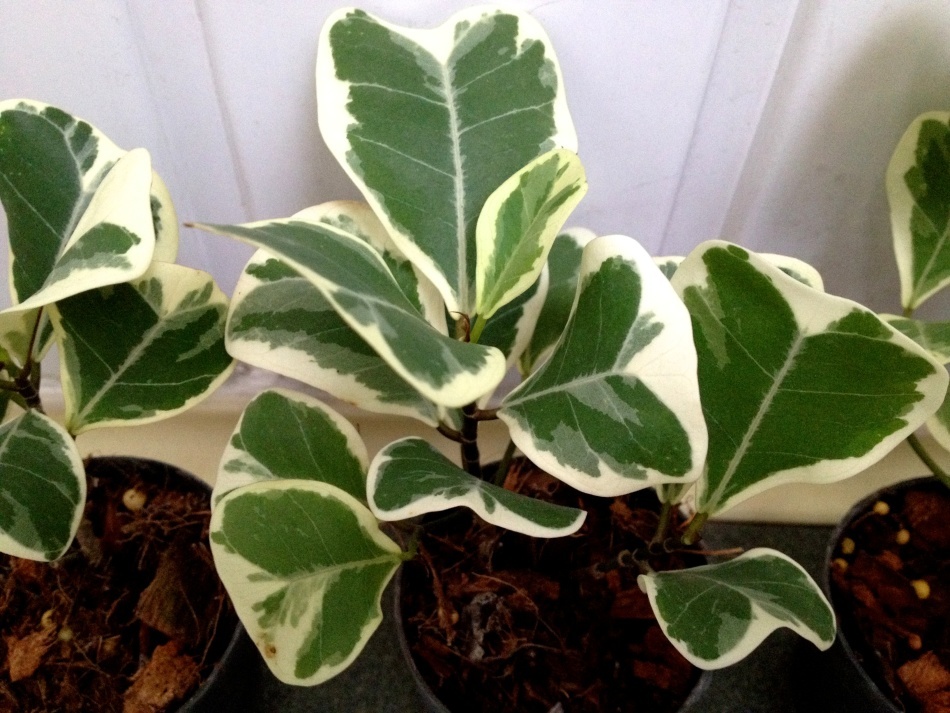 Triangular ficus at home
Triangular ficus at home
Length in nature 30 m. Fruits with abundant sycotium of yellow or green color. Which have a spherical shape
Benjamin
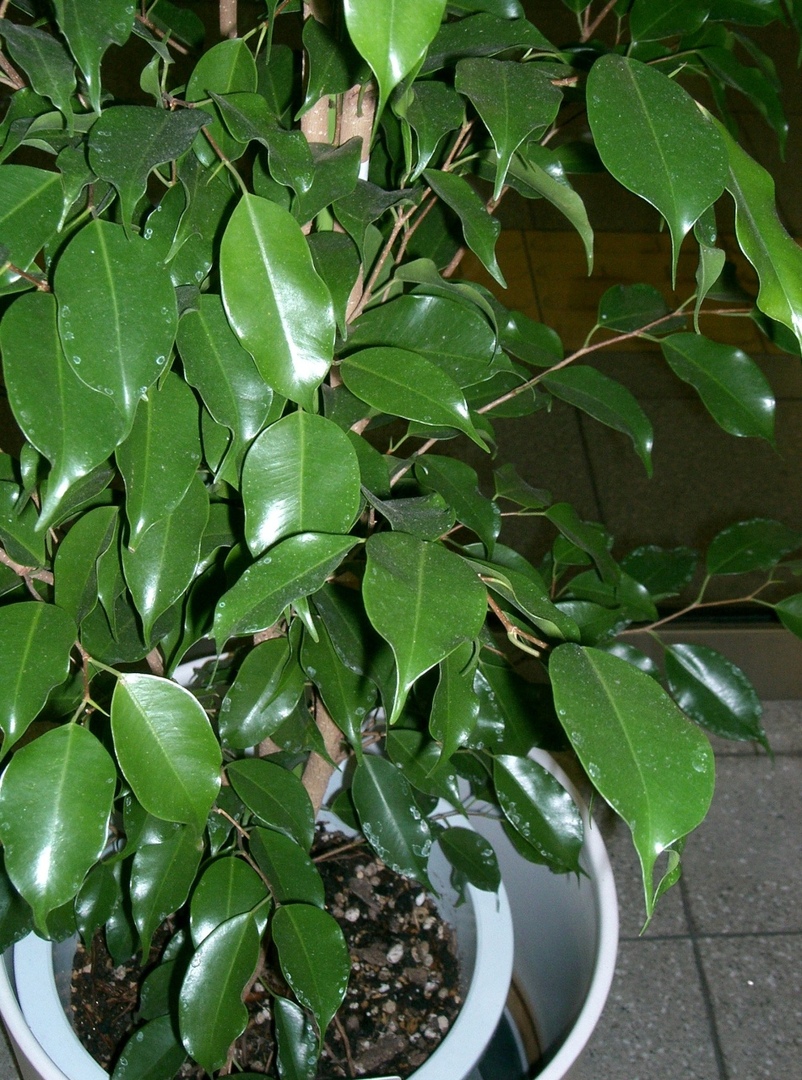 Benjamin - ficus at home
Benjamin - ficus at home - The most common kind among the flower growers of lovers. The leaves are small. It grows like a tree with a height of up to 2.5 m. Depending on the variety, the leaf has the shape of an egg with sharp tips or a spiral shape
- Color or monophonic, or two shades. It has the roots of the support, which, when skillfully decorated, takes a beautiful braided trunk
- The plant is not whimsical in care. It lends itself well to pruning. Due to this it is very suitable for many interiors
Banyan( Bengali)
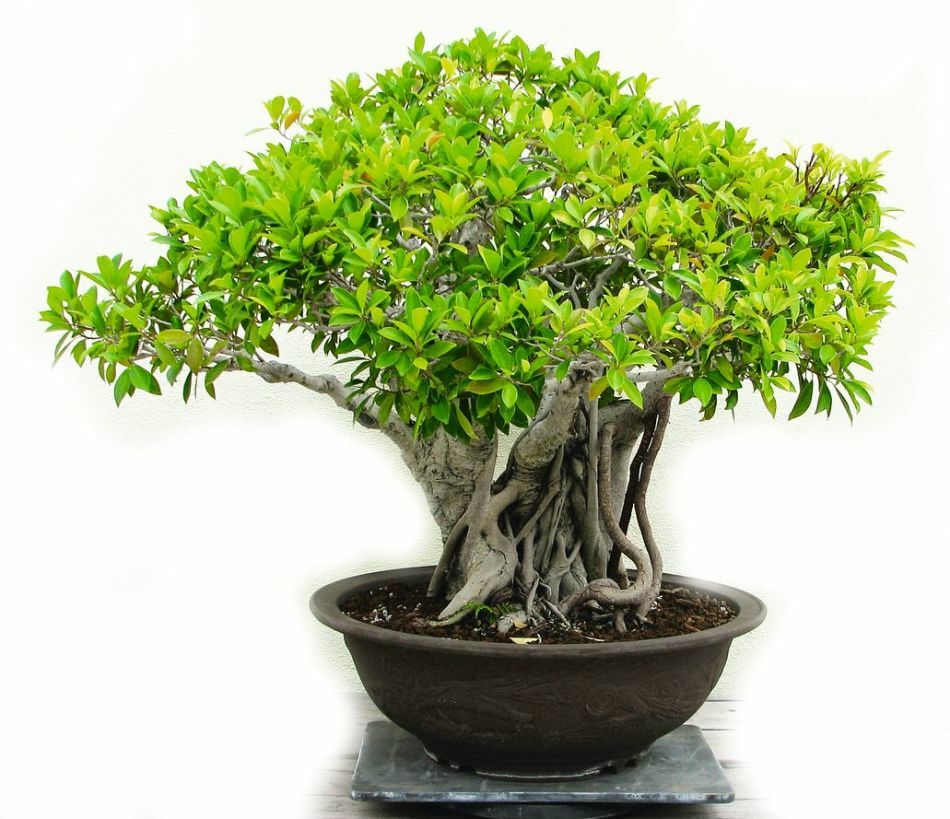 Banyan( Bengali) ficus at home
Banyan( Bengali) ficus at home - Ideal for small rooms. The source of the emergence are the countries of Southeast Asia
- It has a kind of crown, forming, as it were, from a multitude of trunks. With the growth of the trunk on it roots are formed. Some, without getting moisture wither. Survivors form a new trunk, which in time also launches shoots
- Ficus gradually grows in breadth. The leaf has an ovoid or oval shape. During flowering, sycons are formed. Round balls of orange color. Diameter of which is not more than 3 cm
Binnendijka
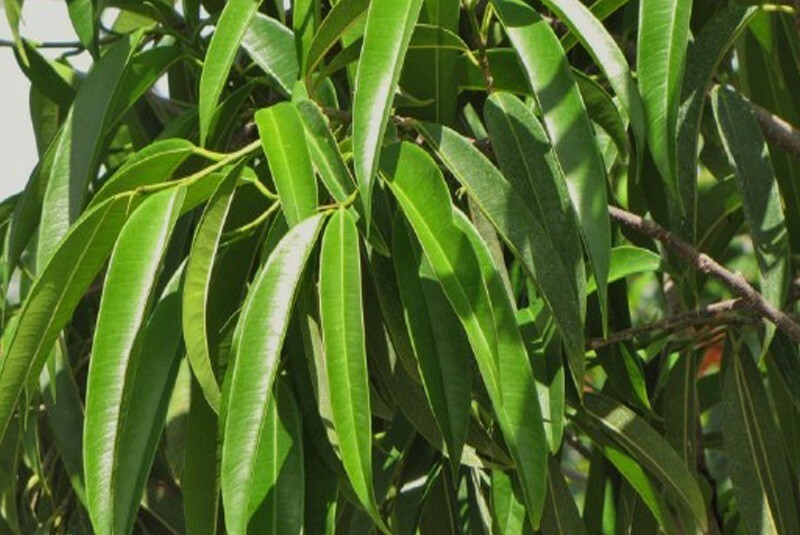 Binnendijka-ficus at home
Binnendijka-ficus at home
Ginseng( ginseng)
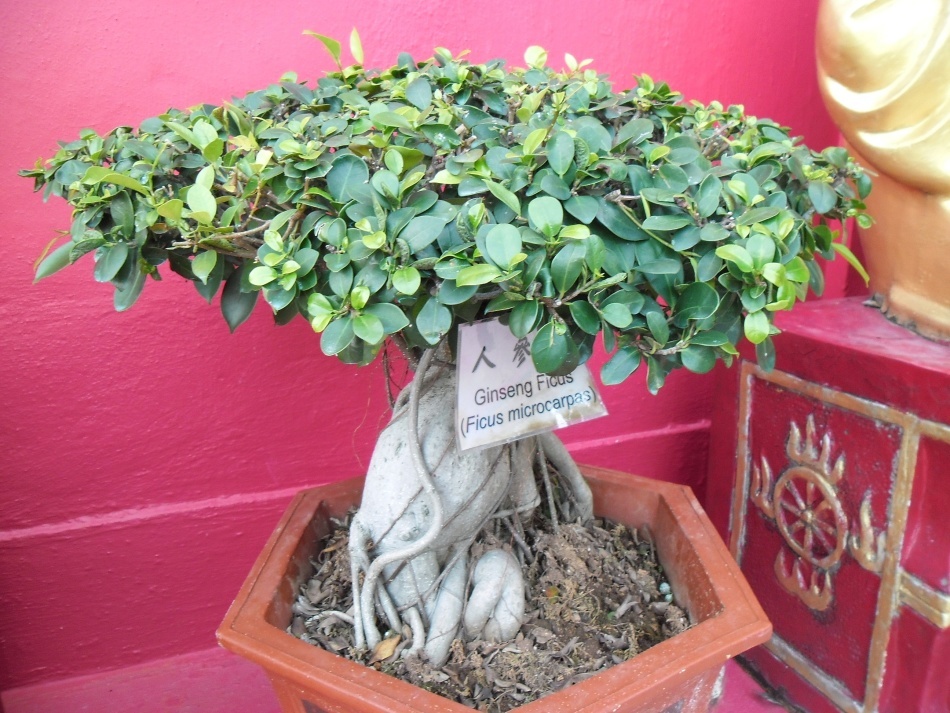 Ficus at home Ginseng( ginseng)
Ficus at home Ginseng( ginseng)
. Refers to the banyan species. A beautiful three-dimensional crown is formed by numerous lateral roots. Leaflets slightly pointed. Updating the foliage takes place every three years.
Rubber( elastic)
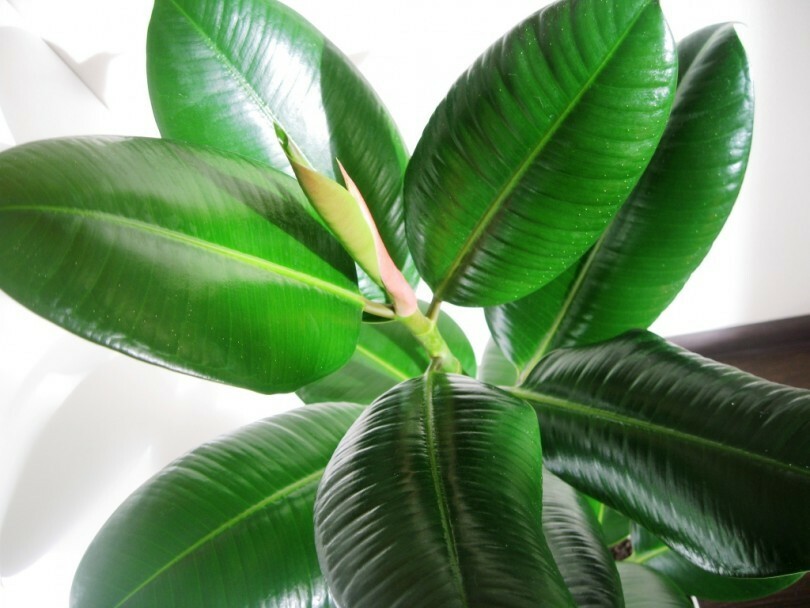 Ficus at home rubber Rubber
Ficus at home rubber Rubber
Crown has a glossy surface of gray-green color. A sheet of elliptical shape with a slight sharpening. The greenish-green spherical form of synconia is formed with sufficient moisture.
Rooted( dwarfish)
 Root( dwarfish) ficus at home
Root( dwarfish) ficus at home
Rusty leaf( Rubygina)
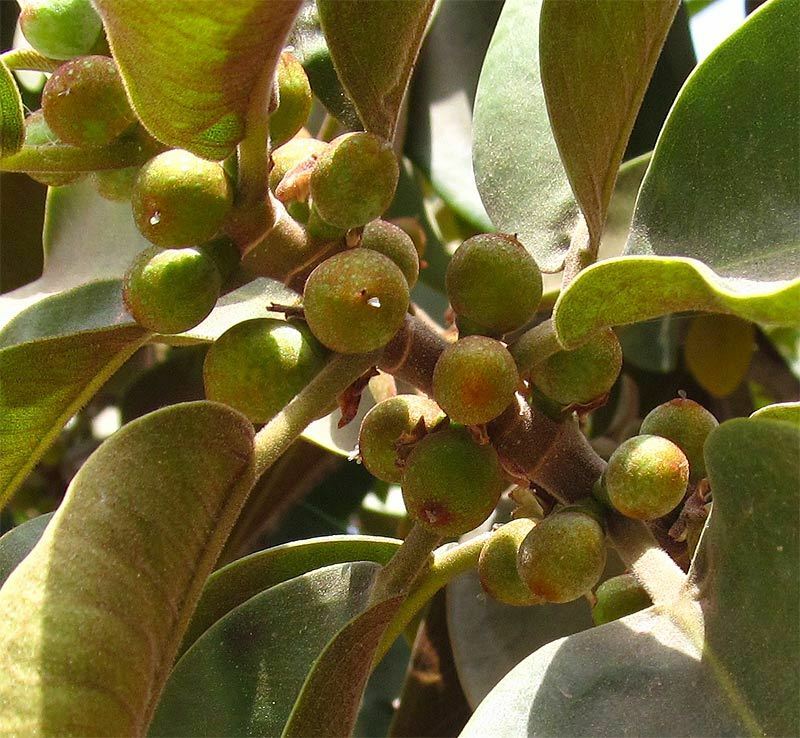 Rusty leaved( Rubygina) ficus at home
Rusty leaved( Rubygina) ficus at home The skiny green leaves of this plant on the reverse side have fluffy orange. Hence its name comes. Sheets large to 25 cm. The young plant has red shoots. The root system is formed in the lower part of the crown.
Retusa
 Retusa-ficus at home
Retusa-ficus at home A thick baroque shape of the trunk is used for growing bansai. Other names are Cuban ficus or laurel tree. The sheet is oval with a pointed tip. Skin structure is dark green in color. Reddish spots on the crown help the air exchange of the plant.
Varied
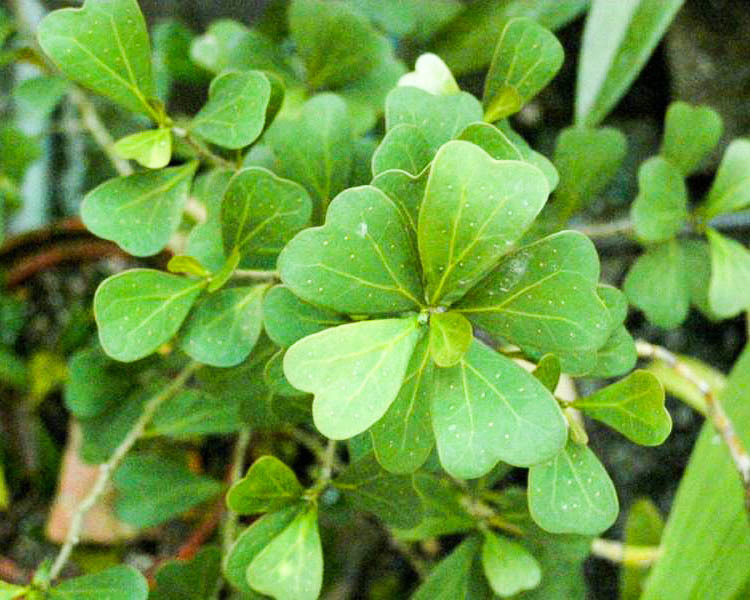 Varied Ficus at home
Varied Ficus at home
Pumila White
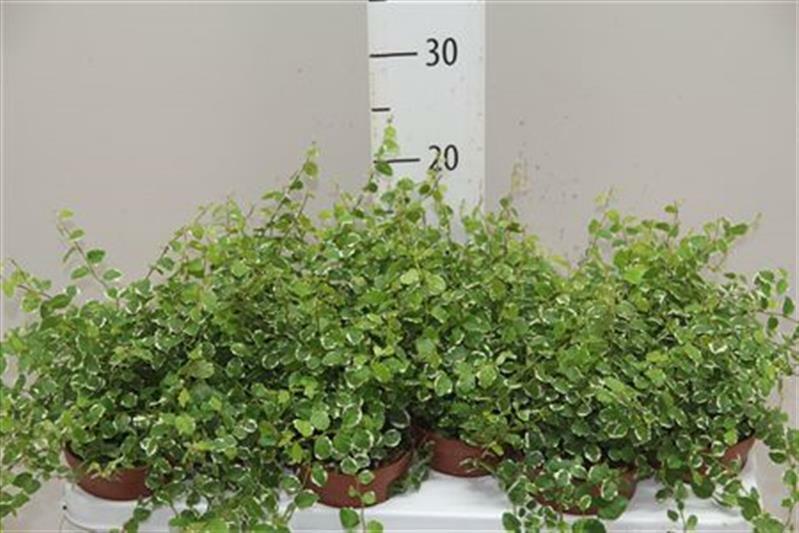 Pumila White Ficus at home
Pumila White Ficus at home
Creeping
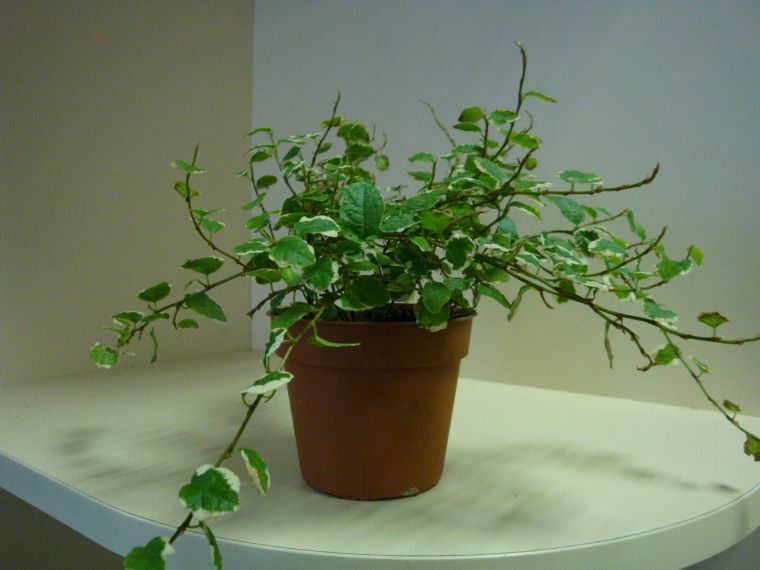 Ficus at home- Creeping
Ficus at home- Creeping
Plioculum
 Ficus at home
Ficus at home Funny plant that needs to be splashed on any surface. The leaves of the plant are yellowish in color and have a three-bladed shape. Are located on all length of a thin trunk.
Parcel
 Parcels-Ficus at home
Parcels-Ficus at home
Melanie
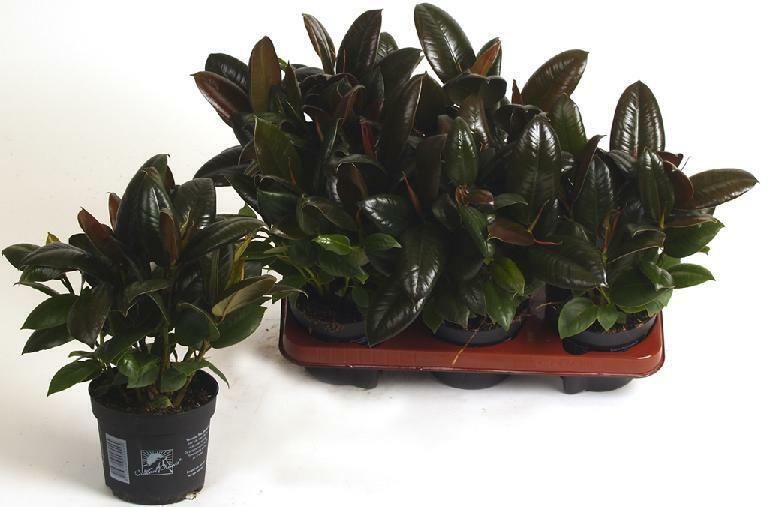 Melanie - Ficus at home
Melanie - Ficus at home Another sacred tree. Originally from Indonesia. A young tree has no branched crown. Over time, air roots grow, which, when in contact with the earth, form a banyan. Flowers do not have, form sikonium, which secrete poisonous juice. The leaves are dark green, epileptic, with a pointed end.
Lyrate
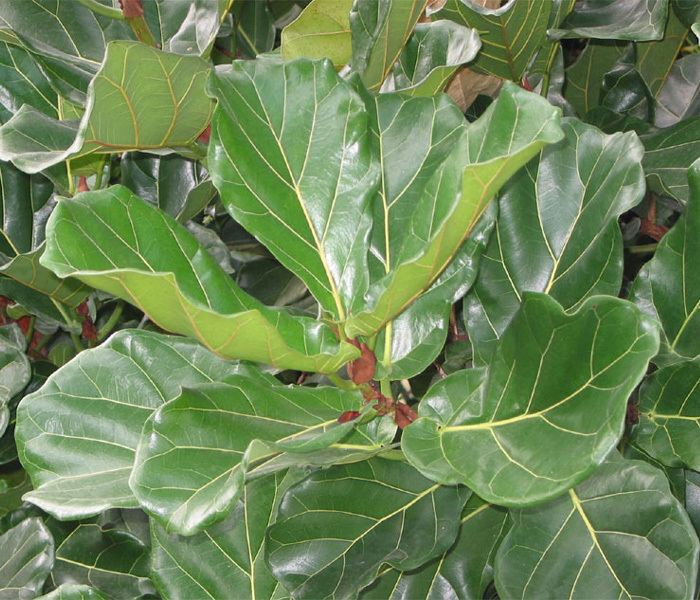 Ficus lyrate
Ficus lyrate Thanks to its similarity with the instrument, it got its name. Originally from tropical Africa. There are no air roots. The leaves are glossy, slightly wrinkled. The edges are wavy. In the center, clear veins with branches. Has a sycium green in white speckles.
Carica( figs room)
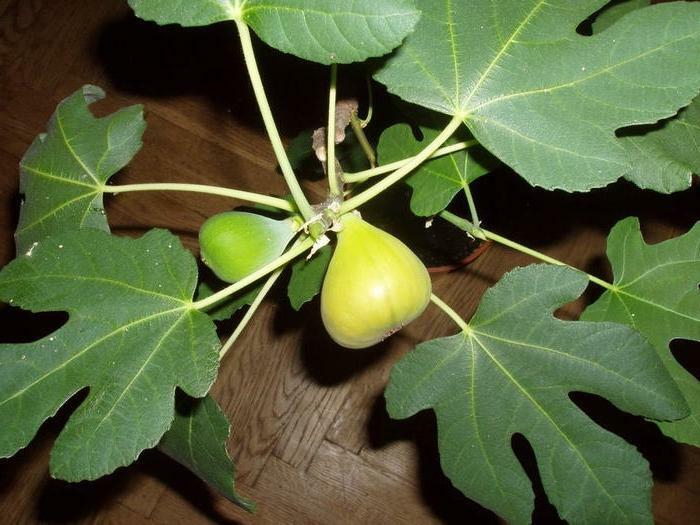 Karika( figs room) - ficus at home
Karika( figs room) - ficus at home
Dracaena
 Dracaena-ficus at home
Dracaena-ficus at home A tall tree-like plant reaching a height of 3 meters. At the top of the tree is formed a three-dimensional crown, consisting of thin, elongated leaves. After the discharge of which, barbs are formed on the trunk.
There are many varieties of this ficus. They differ from each other in different shades of the crown
Deltoid( variegated)
 Deltoid( variegated) ficus at home
Deltoid( variegated) ficus at home
The sheet has a variety of shapes and sizes. Leaves are slightly convex. The surface of the bark has a brownish-gray color. Crohn's fine.
Home care
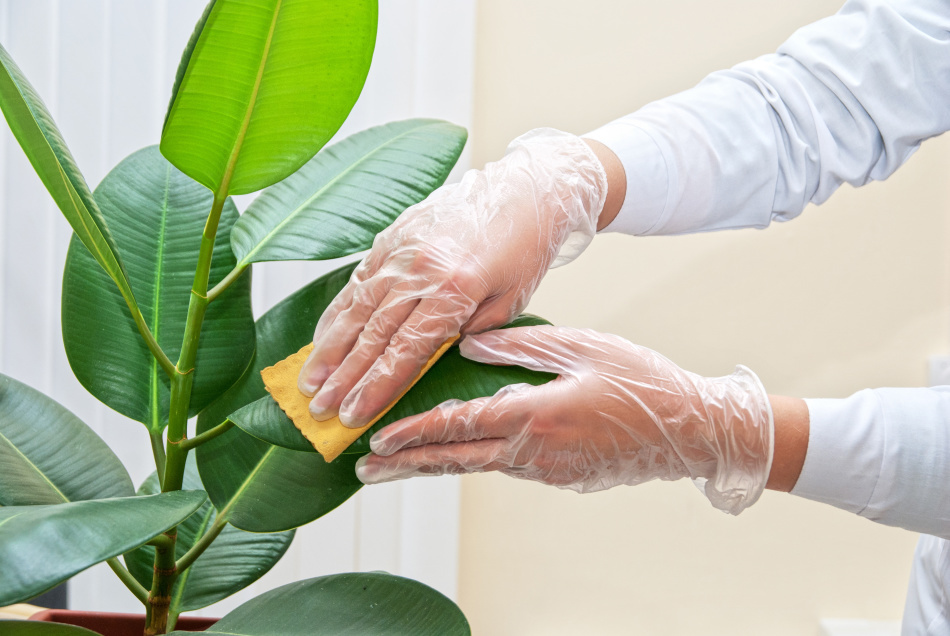 Home care for the ficus
Home care for the ficus - The flower is very life-saving and unpretentious
- Well tolerates partial shade
- The most comfortable temperature is 20-22 degrees
- During the period of intensive growth in the spring-autumn seasons, we well moisturize the land
- .the pallet can lead to rotting of the roots
- In winter, we shorten irrigation to once in 7-10 days.
- We feed up during the active growth every two weeks. We use any natural fertilizers containing nettle infusion, wood ash, humus. Or buy ready-made in specialized stores
- Sometimes there is a small growth of the plant in winter, in this case it can be slightly fed
Reproduction of the ficus
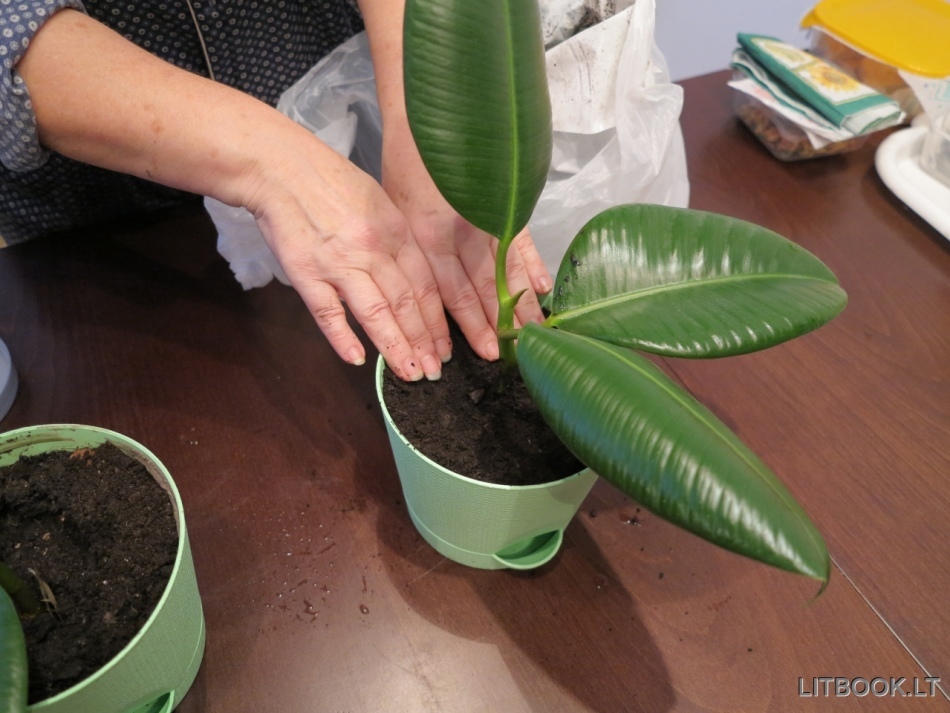
Ficus reproduction at home
- Ficus reproduces by cuttings
- To produce which is desirable in spring or summer
- Cut the vertex of the stem with three pairs of leaflets,length 7-10 cm
- Lower leaves are removed
- Planted in a small pot of soil mixed with sand
- Watering
- Covering with polyethylene. The optimum root formation temperature is 25 degrees
- After the appearance of the first roots in one two weeks
- Planted in a small pot, no more than 15 cm in diameter
- The first two days are covered with polyethylene
- Propagation in the water can be propagated in the same way
Video: Reproduction of figs
How to transplant the ficus correctly?
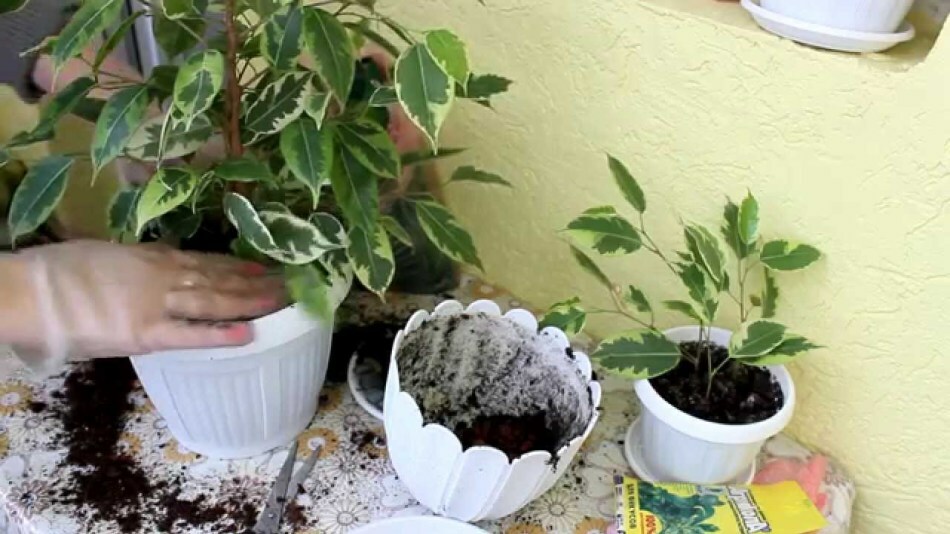 How to transplant the ficus at home correctly?
How to transplant the ficus at home correctly? - Transplanting the ficus at the end of February, early March
- Young-yearly
- Adults - every two, three years
- Oldest once in five, six years
- When transplanting the pot, we increase 3-5 cm. Ficus prefers the close pots
- Too large trees to transplantproblem, so every year we change 3 centimeters of soil. Mining
Transplant:
- Transplant:
- A day before the transplant, the tree is watered
- We put the newspaper on the table
- We put the pot with the fiddle
- Tap on the sides
- Gently pull out the ficus with the ground
- At the bottom of the pot more than the previous one, lay the drainage layer in 1-2 cm
- Spread out the groundwith the addition of sand or perlite
- We put an earthen mound with a ficus without bending the roots
- We fall asleep with the earth mixture
- In a new pot, the plant should be at the same height as in the previous
- With a large tree size,when the roots have outgrown the pot or for other urgent reasons, we make a direct, ordinary transplant, but only with force majeure
Video: Transplant the ficus
How to water the ficus?
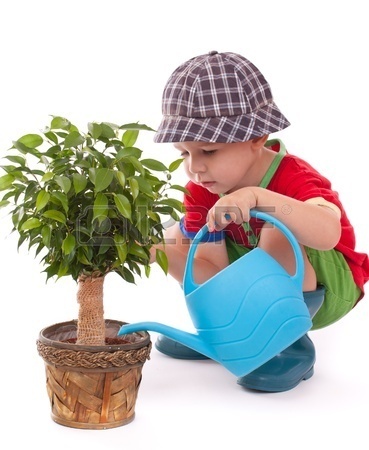 How to properly water the ficus at home?
How to properly water the ficus at home? - Ficus loves comfortable watering
- Bare and overflow destroy the same plant.
- We water it, when the soil is dried to 3.5-7 cm depth
- Do not allow the rest of the water in the pan. If there is a drain,
- Watering is made with soft water, which is permanent during the day.
- We make the water spraying of the leaves necessary for any tropical plant, a connoisseur of humid air.
Video: Ficus Benjamin care, watering
Why does Ficus shed leaves?
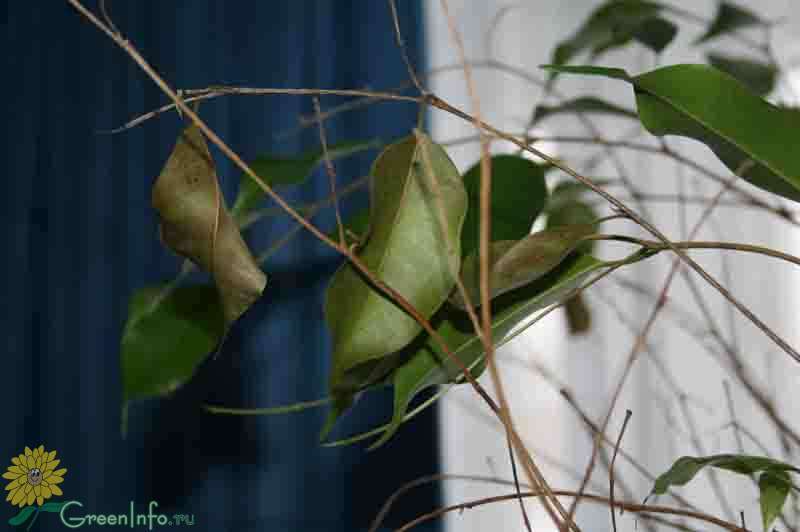 Why does the ficus at home relieve leaves?
Why does the ficus at home relieve leaves? Common causes of
- Excessive watering. As a result of overmoistening of the soil, rotting of the roots takes place. Leaves droop and fall
- Change of place. Ficuses do not tolerate permutations. Any movement leads them to discomfort. For this reason, the falling leaf
- begins. Lack of lighting. For this reason, the growth slows and leaves fall
- Low temperature, draft and excessive feeding, can also cause the discard of leaves
In tree-like fig trees, dumping of leaves from the lower branches with time is natural
Video: Why does the ficus have fallen leaves?
Diseases of the leaves of ficus: fungal, parasitic. Pests of ficus
Fungal diseases of ficus
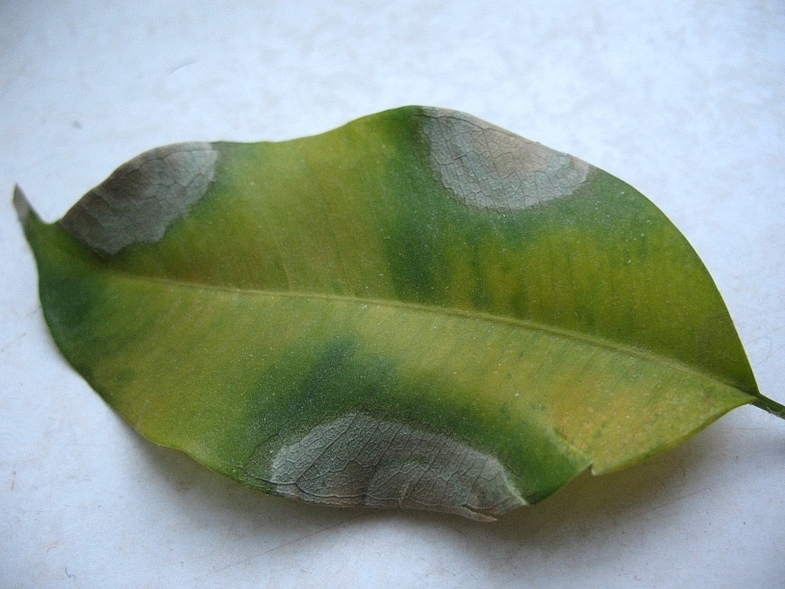 Fungal diseases of ficus at home
Fungal diseases of ficus at home Cercosporosis .It appears as small dark spots, on the underside of the leaf. Leads to the alopecia of the crown. It is fraught with the death of plants.
Anthracnose. The trunk and leaves hit the damp rusty stains. The result may be the death of the stem crown with the subsequent death of thetree. Parasitic
. If the ficus is not conscientiously treated, the following may appear:
- Spider mites. Formed as a white web between the leaves of the
- Shields. Represents a black insect with a hard shell
- Powdery chervets. Appears on old plants in the form of cotton buds on leaves or on the ground after watering
- Aphids, aspic centipedes can also settle near the tree
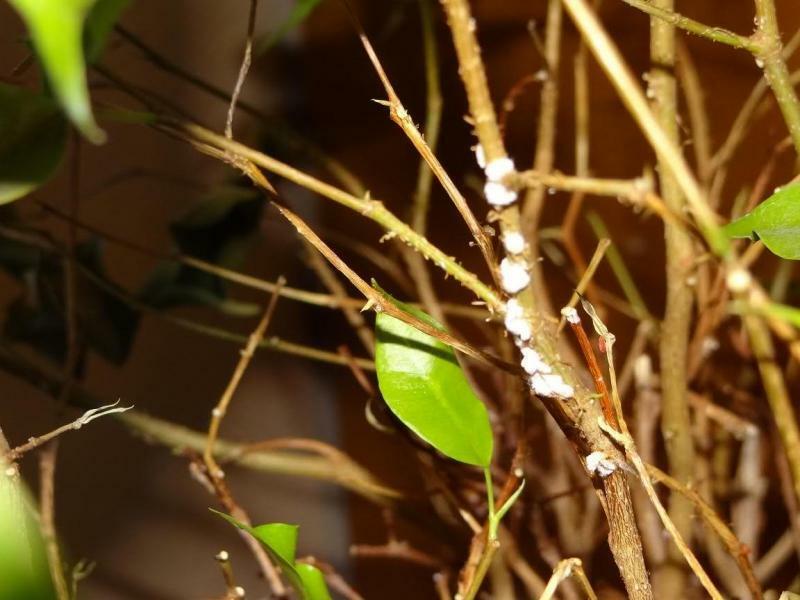 Ficus pests at home
Ficus pests at home Video: Pests of houseplants mealy worm
Despite the unpretentiousness of the ficus, herequires some attention.
Before acquiring such a plant, we get acquainted with the information about each kind of flower. We choose the most suitable for the interior and the conditions of the content.
Video: Ficus-selection, cultivation, care.
